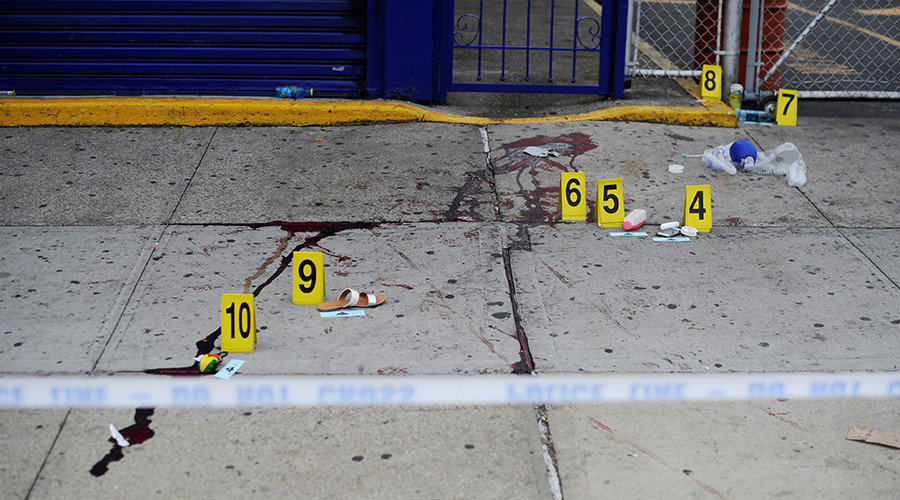
© Mark Kauzlarich / Reuters
The White House's Council of Advisors on Science and Technology concluded in a report
released Tuesday that widely used forensic techniques used in criminal trials in the nation's legal system might not be scientifically valid.
The report said validity "requires that a method has been subjected to empirical testing by multiple groups, under conditions appropriate to its intended use."
The advisory group specifically looked at the methods to analyze forensic evidence from a crime scene and whether or not it is associated with a potential "source" sample from a suspect. Specifically they looked at methods for "comparing DNA samples, bitemarks, latent fingerprints, firearm marks, footwear and hair."
Reviewing more than 2,000 papers on the interaction between science and law, the panel also consulted legal professionals, law enforcement and scientists.
During their investigation, the advisory committee looked at the findings of previous studies of forensic practices and the role of scientific validity within the legal system, then examined the criteria by which scientific validity of forensic feature-comparison methods might be judged. The report also offered recommendations on federal actions to take to strengthen forensic science and promote a "more rigorous use in the court room."
The report found that expert witnesses have often overstated the value of their evidence, going far beyond what the relevant science can justify.
"Examiners have sometimes testified, for example that their conclusions are '100 percent certain;' or have 'zero,' 'essentially zero,' or 'negligible' error rate. As many reviews - including the highly regarded 2009 National Research Council study - have noted, however, such statements are not scientifically defensible: all laboratory tests and feature-comparison analysis have non-zero error rates," stated the report.DNA analysisThe report found DNA analysis errors can and do occur.
"Although the probability that two samples from different sources have the same DNA profile is tiny,
the chance of human error is much higher. Such errors may stem from sample mix-up, contamination, incorrect interpretation, and errors in reporting," stated the report.
The report recommends a series of control checks for possible contamination and semi-annual testing of all analysts who perform DNA testing for criminal cases.
Bitemark analysisThe report said bitemark analysis has relied on the premise that dental characteristics particularly of the front teeth differ substantially among people, and skin or another marked surface can capture these distinctive features.
"
Bitemark analysis is a subjective method. Current protocols do not provide well-defined standards concerning the identification of features...[We] consider the prospect of developing bitemark analysis into a scientifically valid method to be low...far from meeting the scientific standards for foundational validity," the report read.
Fingerprint analysisThe report stated fingerprint analysis "was long hailed as infallible, despite the lack of appropriate empirical studies to assess its error rate."
Fingerprint analysis, a subjective methodology, was found to have a false positive rate as high as one error in 306 FBI cases, and in another crime lab's study, an error in every 18 cases.
Firearm analysisThe report examined the idea that toolmarks produced by guns on the ammunition vary substantially enough to allow components of fired cartridges to be identified with particular firearms.
"The current evidence ... falls short of the scientific criteria for foundational validity," stated the report.
The report stopped short of suggesting widespread challenges of past cases but stated, "We believe the findings and recommendations will be of use both to the judiciary and to those working to strengthen forensic science."
The FBI in a statement said it "disagrees with many of the scientific assertions and conclusions of the report" and said the report "makes broad, unsupported assertions regarding science and forensic science practice."
In a
statement, Attorney General Loretta Lynch said the Justice Department had taken unprecedented steps to strengthen forensic science, including investments in research, draft guidance to lab experts when they testify in court and "reviews of forensic testimony in closed cases."
"We remain confident that, when used properly, forensic science evidence helps juries identify the guilty and clear the innocent, and the department believes that the current legal standards regarding the admissibility of forensic evidence are based on sound science and sound legal reasoning," Lynch said in a statement, as reported by the Wall Street Journal.
"While we appreciate their contribution to the field of scientific inquiry, the department will not be adopting the recommendations related to the admissibility of forensic science evidence."
Reader Comments
to our Newsletter